Green Foxtail
This weed can cause yield reductions of about 25% in wheat when foxtail populations reach 400-500 plants per square metre (sq. yd.).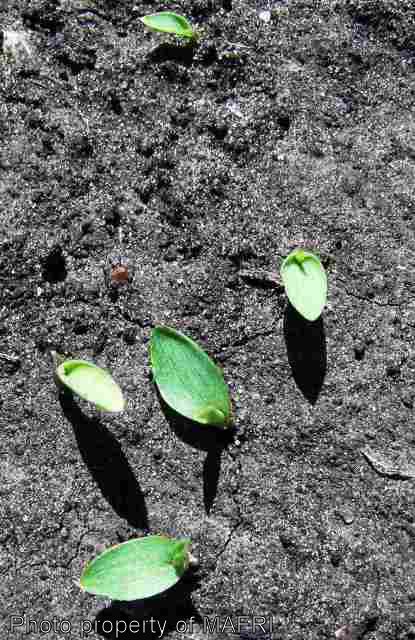 click to enlarge |
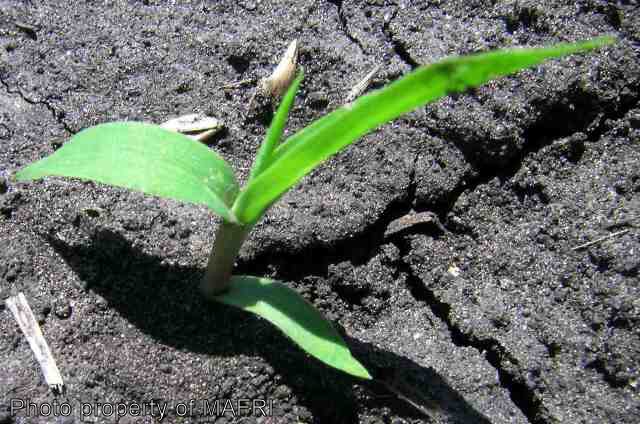 |
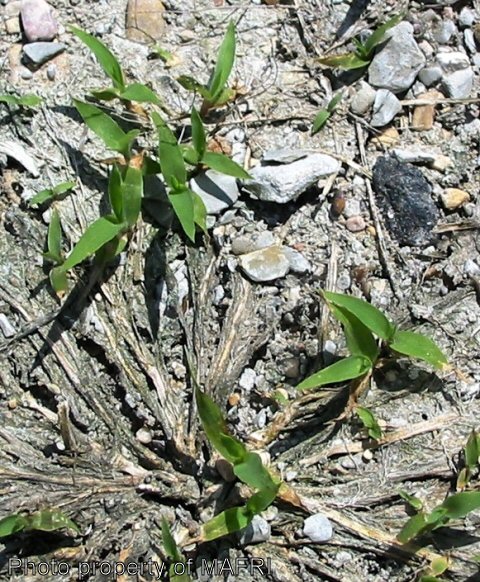 |
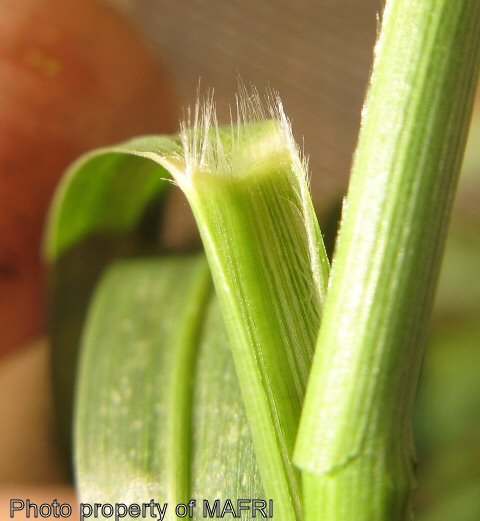 |
 |
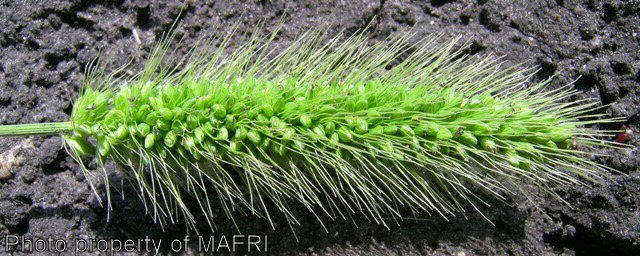 |
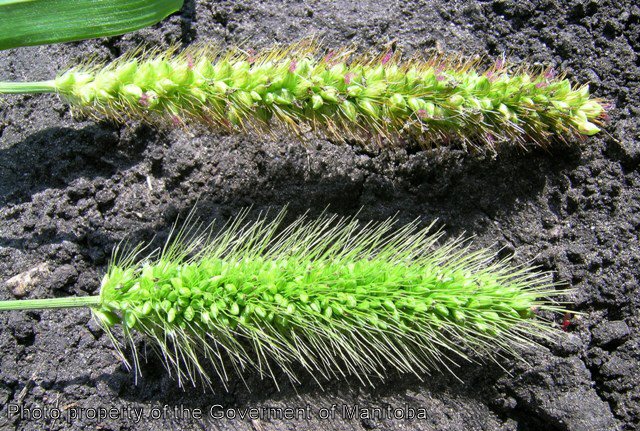 | |
Biology
An annual, reproducing by seed, the stem is erect, branching at the base, and 20-60 cm (8-24 in.) tall. The leaves are flat, without hairs, rough, and have a pointed blade, 5-25 cm (2-10 in.) long. The green heads are cylindrical, tapering toward the summit, 2.5-10 cm (1-4 in.) long, soft, and bristly.
Green foxtail is a heavy seed producer. It produces about 34,000 seeds per plant. However, it is a poor competitor, unless it grows in dense stands. Seeds remain viable in soil for about 3 years. Seeds buried deeper than about 7.5 cm (3 in.) do not germinate.
Foxtail is shallow-rooted and does not grow well in cool, dry conditions. It is slow germinating but grows rapidly. It thrives under conditions of relatively high temperatures and light. Under low light intensity, green foxtail grows very poorly and remains small. Temperature, depth of seed burial, and dormancy each play an important role in the control of germination and the emergence of green foxtail.
Germination occurs readily at temperatures from 20-25 degrees C (68-77 degrees F). These temperatures are common during late May and early June. However, germination may continue up to September. The main flush of growth occurs in June. Subsequent germination usually coincides with rainfalls and moist to wet soils.
Scouting Techniques
Take a minimum of 20 weed counts across the field. Scout frequently because under hot conditions, green foxtail can advance through it's growth stages quickly, potentially escaping the window for herbicide application.
Effects On Crop Quality
Reductions in grain quality can occur. In addition, dockage contributes to cost of grain storage, transportation and seed cleaning.
Threshold/Yield Loss
Yield losses can be especially severe during seasons that start with hot spring temperatures. Green foxtail can cause economic loss when it germinates and emerges at the same time as small grain. Yield loss depends on the number of green foxtail per square metre (sq. yd.), the stage of the weeds and the crop, and weather conditions. If the weed emerges before or at the same time as the crop, green foxtail may be competitive enough to cause yield losses. Green foxtail can reduce yields by 10-15% when wheat is planted late.
Green foxtail is rarely a problem in a competitive stand of barley. As a conservative rule, foxtail control should be considered when 100-150 foxtail per square metre (sq. yd.) are evident before the 2 leaf stage of tall varieties of spring wheat, the 3 leaf stage of semi-dwarf spring wheat, the 3 leaf stage of tall durum, and the 4 leaf stage of semi-dwarf durum.
Green foxtail has little effect on canola yields. Densities as high as 100 plants per square metre (sq. yd.) reduce canola yields by less than 5%.
Additional yield loss information for green foxtail is available in the current Guide to Crop Protection.
Control Tips
Because this weed is a poor competitor, it can be controlled by strong crop stands produced by early seeding and good fertilization. Barley and canola both compete well with this weed. Semi-dwarf wheat is more susceptible to foxtail competition than normal height varieties. Early maturing varieties compete by shading out the foxtail or by completing their early growth before competition starts. Early seeding and the use of slightly higher seeding rates reduce competition from green foxtail. The suppressed plants may still produce enough seed to infest the field in subsequent years.
Green foxtail does not thrive in the cool, loose soil that is often found between the crop rows of reduced tillage or zero tillage fields. Green foxtail populations generally decline under reduced or zero till crop production.
Green foxtail does well when fertilizer is broadcast across the soil surface. Banding nitrogen places the fertilizer in the soil where it is unavailable to the shallow root system of this weed.

